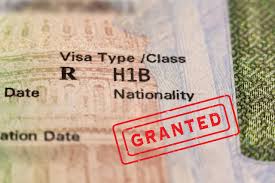Be the first one to receive latest updates.
The Story Behind The H-1B Visa

The signing of the Immigration Act of 1990 on November 29, 1990, made the H-1B visa a legal program. 41st President of the United States George H.W. Bush provided a lengthy statement at the signing ceremony:
Today I am pleased to sign S. 358, the “Immigration Act of 1990” — the most comprehensive reform of our immigration laws in 66 years. This Act recognizes the fundamental importance and historic contributions of immigrants to our country. S. 358 accomplishes what this Administration sought from the outset of the immigration reform process: a complementary blending of our tradition of family reunification with increased immigration of skilled individuals to meet our economic needs.
Later in the statement, President Bush would speak in detail about why he felt the Immigration Act of 1990 was necessary to boost the US economy at the time:
…Immigration reform began in 1986 with an effort to close the “back door” on illegal immigration through enactment of the 1986 Immigration Reform and Control Act (IRCA). Now, as we open the “front door” to increased legal immigration, I am pleased that this Act also provides needed enforcement authority.
S. 358 meets several objectives of my Administration’s war on drugs and violent crime. Specifically, it provides for the expeditious deportation of aliens who, by their violent criminal acts, forfeit their right to remain in this country. These offenders, comprising nearly a quarter of our Federal prison population, jeopardize the safety and well-being of every American resident. In addition, S. 358 improves this Administration’s ability to secure the U.S. border — the front lines of the war on drugs — by clarifying the authority of Immigration and Naturalization Service enforcement officers to make arrests and carry firearms.
S. 358 also improves the anti-discrimination provisions of the IRCA. These amendments will help deter discrimination that might be related to the implementation of “employer sanctions” under the 1986 law. In this regard, S. 358 helps to remedy unfortunate side effects of this important deterrent to illegal immigration.
On October 26, 1990, the Immigration Act of 1990 passed the US Senate with a vote of 89-8; the following day, the legislation passed the US House of Representatives with a 264-118 vote. The bill would become official law just over a month later on November 29, 1990. However, the story of how the Immigration Act of 1990 came to be, along with the H-1B visa, is complex – as are most matters of legislation.
Senator Edward (Ted) Kennedy of Massachusetts first sponsored the legislation on February 7, 1989, when it was introduced to the Senate as the Immigration Act of 1989. The bill was originally intended to reform the Immigration and Nationality Act of 1965. Analysts state ‘the principal goal of the legislation was to design an immigration selection system that would meet the future needs of the country.’
An academic paper prepared by Daniel J. B. Mitchell entitled Wage Pressures and Labor Shortages: The 1960s and 1980s, which appeared in the Brookings Papers on Economic Activity in 1989, details the labor shortage issues Senator Kennedy was hoping to resolve with the Immigration Act:
…Since the mid-1980s, some articles, based mainly on demographic projections of the baby bust, have warned of an impending [labor] shortage. Others, reminiscent of the early 1960s, complain of a growing structural mismatch problem involving basic skill and education deficiencies. Still others argue, however, that potential employees among current nonparticipants in the labor force or in high-unemployment areas can move into available jobs. Employers are being advised to find ways to recruit current nonparticipants. Surprisingly, given the interest in the effects of recently enacted immigration controls, these controls have not generally been referenced in shortage articles.
Mitchell was likely referencing the effects of the Refugee Act of 1980 (also sponsored in the Senate by Ted Kennedy), the Immigration and Control Act of 1986 (IRCA), and the Immigration Act of 1990 — which created the H-1B visa program when speaking on ‘recently enacted immigration control.’ Mitchell continues:
Recent shortage articles that cite actual employer recruitment problems, as opposed to demographic projections, have been focused on problems in particular industries, regions, or occupations. They have tended to spotlight health care, some parts of retailing, and clerical employees in particular areas. For several years, there have been complaints that low-wage jobs in services, fast food, and small businesses generally are hard to fill…However, there have also been reports of worker shortages in high-wage settings. McDonnell Douglas was reported recently to have imported certain skilled workers from Britain and to be making heavy use of overtime to overcome a labor shortage. Boeing in Everett, Washington, has rented excess workers from a Lockheed facility in Marietta, Georgia. The impression left by the labor shortage articles is that 1988-89 is roughly equivalent to late 1964 and early 1965…In both cases, spot shortages were reported in selected sectors and regions, and localized problems were seen as becoming more numerous.
The Washington Post published an article by Steve Matthews on January 21, 1990, which also went into detail regarding predicted labor shortages throughout the southeast portion of the United States. From the article:
…Charlotte, for example, is grappling with a chronic labor shortage, one that began to slow the city’s growth in 1989 and is likely to continue throughout the next decade. And equally important, many of those entering the work force lack the basic skills necessary to be productive.
Williams continued, ‘…But changing demographics are causing concern among Charlotte’s and the Southeast’s business community. As the population ages, fewer people are entering the labor force. With an unemployment rate of 2.2 percent as of November, many jobs go begging in Charlotte…’
During a C-SPAN episode of the Close Up Forum, hosted by the Close Up Foundation on March 7, 1990 — a group of high school students discussed immigration issues the United States was facing at the time. Adam Hertzman, who was a student at Winston Churchill High School in Potomac, Maryland, mentioned labor shortages the United States was facing at that point:
…Unemployment in this country is at a record low, and there are hundreds and hundreds [sic] of job opportunities. For instance, in the nursing business [sic], we have to import actually [sic] nurses from other countries, such as Sweden; European countries.
The H-1B visa was included in the Immigration Act of 1990 in order to combat the issues mentioned above; however, the visa has numerous issues that the U.S. Citizenship and Immigration Services (USCIS) recognizes. USCIS points out the following H-1B fraud and abuse indicators on its website:
- The H-1B worker is not or will not be paid the wage certified on the Labor Condition Application (LCA).
- There is a wage disparity between H-1B workers and other workers performing the same or similar duties, particularly to the detriment of U.S. workers.
- The H-1B worker is not performing the duties specified in the H-1B petition, including when the duties are at a higher level than the position description.
- The H-1B worker has less experience than U.S. workers in similar positions in the same company.
- The H-1B worker is not working in the intended location as certified on the LCA.
Is it time to reform or replace the H1-B visa?
For More Follow Us On: Twitter, Facebook, and Check Out Our Youtube
Stop. Listen. Share. A Social Experiment Enterprise.





Leave a Comment